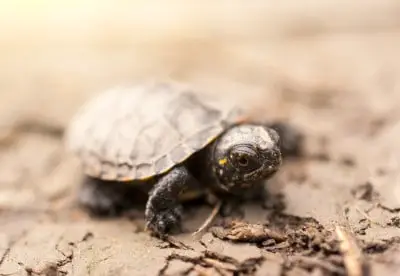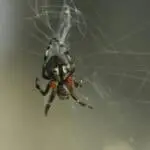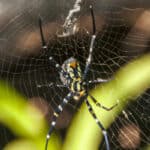Tortoises and turtles have various features common with creatures in other units of classification. This makes it challenging to establish whether they are amphibians, reptiles, or mammals. As a pet owner, you need to understand the anatomical structure and adaptations of your pets to properly understand them
Turtles and tortoises are reptiles because they are cold-blooded, have a dry and scaly skin, lay eggs, and breathe through their lungs. Thus, while these two creatures thrive in different environments, their anatomy is similar to that of class Reptilia.
If you want to know what makes tortoises and turtles reptiles, this is the ultimate guide. We will help you know the difference between a tortoise and a turtle, what makes a turtle a reptile, and what makes a tortoise a reptile. Read the rest of the sections to find out all the answers you need.

What Makes Turtles Reptiles?
Turtles exhibit similar behavior to amphibians, given that they live on both land and water. However, these creatures are reptiles, given their common feature with members of class Reptilia.
Turtles are reptiles because they have scaly skin covering their bodies, rely on vibrations to detect their environment rather than ears, breathe through their lungs, and are cold-blooded. Despite having dry and scaly skin, the turtle’s skin is also sensitive to its environment and can feel pain and pressure through its shells.
They also have a shell covered with scutes, which are made of keratin material. The top of the shell is called the carapace, and the bottom is called the plastron. This shell is permanently attached to the turtle’s rib cage and spine such that they cannot crawl out of it. However, some turtles, such as the hidden necked turtles, can pull their head and feet inside their shell. The side-necked turtles, which have long necks and limbs, tuck sideways into the shell.
Just like reptiles, the turtle ears are not as sensitive as that of humans. Thus, they mostly rely on vibrations and water pressure changes to detect their predators or food. Their good taste of smell also enables them to locate their food.
However, unlike most reptiles, turtles cannot stretch their tongue out to catch food. Instead, carnivorous turtles have a fast head motion that enables them to catch their prey. They also have a rigid beak and use their jaws, comprising horny ridges instead of teeth, to cut and chew their food. Herbivorous turtles, on the other hand, have serrated edged ridges to cut through plants.
Respiration in turtles is through the lungs. This implies the relaxation and contraction of the abdominal and diaphragm muscles. However, given that the turtle’s ribs are attached to their shell, they are immobile, and the turtle has special adaptations to ensure they breathe through their lungs without straining.
Turtles are also cold-blooded, just like other reptiles. However, due to their high metabolism, some turtles have a higher body temperature than the surrounding waters to facilitate body functions such as digestion.
Like other reptiles, turtles also lay eggs. Their eggs have a shell that enables them to survive the harsh conditions on land. This is unlike amphibians, which lay eggs containing a gelatinous covering underwater. The large turtle species lay spherical eggs while the rest lay elongated eggs. In some species, the environmental temperatures will dictate whether an egg develops into a male or female.
Also, turtles do not have mothering instincts like most reptiles and will leave their eggs in the sand or holes after laying. After hatching, the young turtles will find their way into the water.
What Makes Tortoise a Reptile?
Tortoises are terrestrial turtles. They spend all their lives on land and have adaptations to survive in the dry land. Despite their diverse features, tortoises are reptiles, as we will see.
Tortoises are reptiles due to their scaly body, dry skin, cold-blooded nature, and dinosaur descent. The body temperature of a tortoise is dependent on the environment. This implies that they cannot produce their heat. Thus, for their bodies to get energy, they rely on the external heat from the sun.
Like other reptiles, tortoises have a backbone, but theirs is invisible and covered by their dome-shaped and heavy shell. The shell attaches to its ribs, but its positioning allows free movement of the limbs and tail and allows breathing. This shell is an adaptation that enables the tortoise to survive in the wild.
Given that tortoises have a slow movement, they are an easy catch for their predators. However, if they retract back to their shells, it will be difficult for the predator to attack them as their shell is hard and difficult to crush.
Just like reptiles, the tortoise skin is covered with scales. These scales are larger than that of other reptiles, as they are adapted for protection. Given the tortoises’ long lifespan, these scales shed over time or wear down. Also, these creatures, like other reptiles, shed their skin, but most of their dead skin accumulates into thick plates and knobs and offers protection to the body parts outside the shell. It is these rings that experts count to determine the age of a tortoise.
Finally, tortoises are also considered reptiles due to their reptile skull. They have a diapsid skull originating from their parents. A diapsid skull comprises a temporal hole behind the eye cavity on either side of the skull. The temporal hole allows extra muscles to go through, giving the tortoise more biting power.
What Is the Difference Between a Turtle and a Tortoise?
Turtles and tortoises have similar characteristics given that they belong to the same order, Testudines, which is characterized by a cartilaginous shell that acts as a shield. Despite their similarities, they have unique physical adaptations to survive in their respective habitat.
The difference between a turtle and a reptile is in their habitat. Turtles mainly live in or near water bodies, while tortoises dwell on terrestrial land. The only time turtles, especially the females, will come on land, is to lay eggs or bask. Tortoises, on the other hand, have little to do with water except drinking and occasional baths.
Turtles and tortoises also have anatomical differences to aid in their adaptations. These differences are seen in their limbs, shell, and body structure. To survive in the marine, turtles have flat and streamlined bodies compared to tortoises with dome-shaped shells.
Both the tortoise and turtle have an elephantine hind limb. However, turtles have flipper-like front limbs and webbed feet to enable them to swim in the waters. The turtle’s feet also have long claws. This explains the dragged motion on land. Some turtle species, especially the males, never leave the water. However, the females come back to the land to lay their eggs, but generally, turtles will leave the water and come to the bank or climb the rocks and logs when they want to bask.
Tortoises are land dwellers with round and stumpy feet to enable movement on land. They also have strong forelimbs, useful for those living in hot environments to burrow into the ground and slip underground when it is too hot. Unlike turtles, tortoises have dome-shaped but heavy shells that restrict their movement. This explains why they are generally slow.
Turtles are omnivores and enjoy both vegetables and flesh. In the marine, they will eat sea vegetation, small invertebrates, and jellyfish. On the other hand, Tortoises are herbivores and rely on shrubs, weeds, fruits, and cacti for food. However, the small turtles will mostly feed on protein to promote growth and development, and as they age, they will have more preference for vegetables.
In the wild, they will naturally balance their diet, but if you keep these creatures in captivity, you should ensure you supply a balance between vegetables and animal protein.
Also read How Turtles Can Swim but Tortoises Don’t? Facts You Should Know
Finally
Turtles live on both water and land, just like amphibians. However, they are still reptiles. This is because, unlike amphibians, which have a larval stage of development, turtles do not, among many other reasons. On the other hand, Tortoises live on terrestrial land and are reptiles for similar reasons as turtles. However, they are different from birds or mammals, despite some physical similarities. While birds too have scales, tortoises do not fall in the same category as they do not have feathers and cannot fly. Also, they are not mammals as they lay eggs. Thus, tortoises and turtles are reptiles because they belong to the same class as other reptiles, Reptilia.








